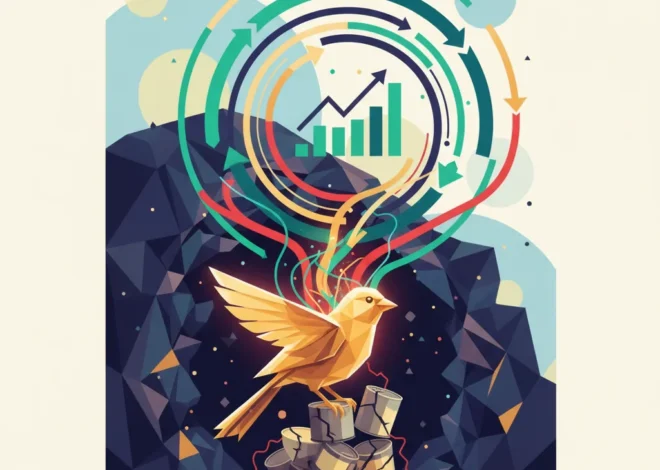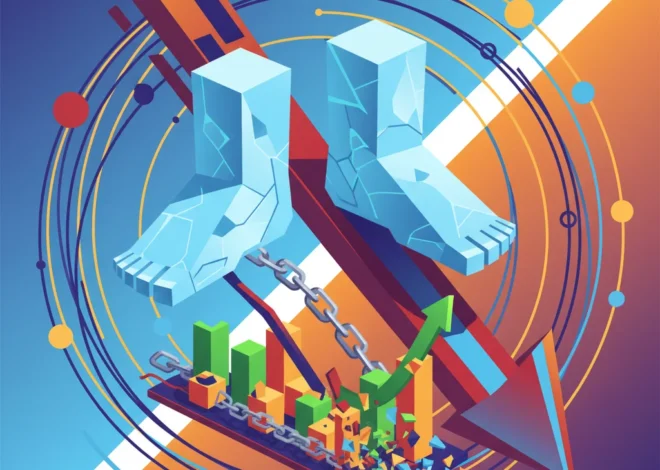
Shutdown Averted: Decoding the Economic Fallout and What It Means for Investors
In a move that sent a ripple of relief through the financial markets, US senators have brokered a bipartisan deal, taking the first crucial step toward ending a record-breaking government shutdown. The agreement, which saw a small cohort of Democrats join Republicans, advances a bill to reopen federal agencies and pull the US economy back from a self-inflicted fiscal cliff. While Washington breathes a collective sigh of relief, for investors, finance professionals, and business leaders, the resolution of the immediate crisis is just the beginning. The real work lies in understanding the economic damage, assessing the market’s reaction, and navigating the lingering uncertainty.
This political brinkmanship, though temporarily resolved, leaves behind a trail of economic questions. What is the true cost of shuttering the federal government? How does this recurring political risk factor into long-term investment strategies? And what does it signal about the stability of the world’s largest economy? This analysis will delve into the multifaceted impact of the shutdown, from its direct effect on GDP to its subtle influence on the intricate worlds of financial technology and trading.
The Anatomy of an Economic Disruption
A government shutdown occurs when Congress fails to pass funding legislation, forcing non-essential federal agencies to cease operations. This recent impasse, which became the longest in US history, furloughed hundreds of thousands of federal workers and contractors, effectively removing their paychecks from the consumer economy. The direct consequences are stark: halted public services, delayed regulatory approvals, and a significant blow to consumer confidence.
The economic cost is not trivial. The Congressional Budget Office (CBO) estimated that the 35-day shutdown in 2018-2019 permanently reduced real GDP by approximately $3 billion, or 0.02%. While some economic activity is merely deferred, a significant portion is lost forever. According to a report on the Senate deal, the urgency to reopen the government stemmed from a growing awareness of these escalating economic consequences. For an economy already navigating global trade tensions and shifting monetary policy, such a self-inflicted wound introduces an unnecessary and damaging variable.
Grounded Ambitions: Why UK Aviation Taxes Could Stall Economic Takeoff
Wall Street’s Whipsaw: How the Stock Market Prices Political Risk
For investors, government shutdowns are a masterclass in separating political noise from fundamental economic signals. Historically, the stock market has shown remarkable resilience to these events. While short-term volatility often increases as deadlines approach, the market’s long-term trajectory has rarely been derailed by a temporary shutdown. However, this doesn’t mean investors can afford to be complacent.
The primary impact on markets is an injection of uncertainty. Traders and portfolio managers must price in a new layer of “political risk”—the possibility that political dysfunction could spill over and cause genuine economic harm. This can lead to a “flight to safety,” where investors sell riskier assets like stocks and buy safer ones like U.S. Treasury bonds. The key takeaway is that while a resolution often triggers a relief rally, the repeated pattern of governance-by-crisis can erode investor confidence over time.
To provide historical context, let’s examine the performance of the S&P 500 during previous major government shutdowns.
| Shutdown Period | Duration (Days) | S&P 500 Performance During Shutdown | Context |
|---|---|---|---|
| Nov 1995 | 5 | +1.3% | Part of a larger budget battle between President Clinton and Congress. |
| Dec 1995 – Jan 1996 | 21 | +0.1% | The longest shutdown at the time, it caused significant disruption but the market remained flat. |
| Oct 2013 | 16 | +3.1% | Markets rallied through the shutdown, anticipating a resolution and focusing on strong corporate earnings. |
| Jan 2018 – Feb 2018 | 3 | -0.03% | A brief weekend shutdown with minimal market impact. |
| Dec 2018 – Jan 2019 | 35 | +10.3% | Coincided with the market bottoming after a Q4 correction; the rally was driven more by Fed policy pivot than shutdown resolution. (source) |
As the data shows, there is no clear-cut negative correlation. Markets often look past the immediate political drama, focusing instead on broader fundamentals like corporate earnings, interest rates, and the global economic outlook. However, the true danger lies in the potential for a shutdown to coincide with an already fragile economic environment, amplifying negative sentiment.
The Hidden Costs to Finance, Fintech, and Banking
Beyond the headline GDP and stock market figures, a government shutdown sends disruptive tremors through the foundational infrastructure of the finance industry.
1. Data Blackouts and Algorithmic Trading: The modern financial system runs on data. High-frequency trading algorithms and sophisticated quantitative models depend on a steady stream of reliable economic data from government agencies like the Bureau of Labor Statistics (inflation, jobs reports) and the Census Bureau (retail sales). During a shutdown, these data releases are delayed. This creates a “fog of war” for traders and economists, forcing them to make decisions with incomplete information and increasing market volatility. Fintech companies that provide data analytics or automated investment advice are particularly vulnerable to these data blackouts.
2. Regulatory Gridlock: The Securities and Exchange Commission (SEC) and the Commodity Futures Trading Commission (CFTC) operate on skeleton crews during a shutdown. This grinds the gears of capital markets to a halt. Companies planning to go public (IPOs) see their filings delayed. Mergers and acquisitions requiring regulatory approval are put on ice. This not only delays business activity but also disrupts the flow of capital, a core function of the banking and investing ecosystem.
3. The Case for Decentralization? In moments of centralized failure, some turn to decentralized alternatives. Proponents of blockchain and cryptocurrencies often highlight their resilience to the whims of national governments. In theory, a decentralized financial (DeFi) system is immune to a government shutdown. However, the reality is more complex. The crypto market remains highly correlated with traditional risk assets and is heavily influenced by the same macroeconomic sentiment that a shutdown affects. Furthermore, the regulatory framework for digital assets is still being built, a process that itself is delayed by a shutdown.
The Path Forward: A Roadmap for Investors and Business Leaders
With a temporary funding bill in place, the immediate crisis is over. But the underlying political divisions that caused it remain firmly entrenched. So, what should a prudent investor or business leader do now?
- Focus on Fundamentals: Look past the short-term political theater. A company’s long-term value is determined by its earnings power, competitive position, and balance sheet strength, not by a temporary budget impasse in Washington.
- Monitor Economic Indicators: Pay close attention to consumer confidence surveys and business investment data in the coming months. These will be the first indicators to reveal any lasting damage from the shutdown. The Federal Reserve’s commentary on the economic impact will also be critical for understanding future monetary policy. (source)
- Diversify and Hedge: The current environment underscores the importance of a well-diversified portfolio. Political risk is now a tangible factor that can be hedged against. Consider assets that may perform well in periods of uncertainty.
- Prepare for the Next Fight: This deal is a stopgap measure. Congress will have to address government funding again in the near future. Use this period of calm to stress-test your business plans and investment portfolios for another round of potential volatility.
Conclusion: A Fragile Truce
The Senate’s deal to reopen the government is a welcome development that pulls the U.S. economy back from the brink. It allows hundreds of thousands of workers to return to their jobs and restores a semblance of normalcy to government operations. For the stock market, it removes a key source of near-term uncertainty, potentially paving the way for a relief rally.
However, it would be a mistake to view this as a final victory. It is a fragile truce in an ongoing battle over fiscal policy. The shutdown has inflicted real, albeit recoverable, damage to the economy and has further eroded trust in the U.S. political process. For those engaged in finance, investing, and global business, the key lesson is clear: political risk is no longer a theoretical concept but a recurring, tangible force that must be actively managed. The immediate storm has passed, but wise navigators will be preparing for the next one on the horizon.


